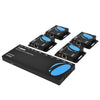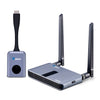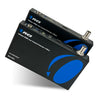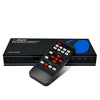
While often overlooked, cables possess remarkable potential to enhance your audio and visual experiences. They’re the quiet, essential conduits that carry high-definition visuals and crystal-clear sounds so you can focus on enjoying all the types of content you crave.
Understanding your A/V cables, or cables for audio and video, is essential for optimizing your setup. The right cables guarantee seamless connectivity among devices, ensuring top-notch performance while reducing compatibility issues. On the other hand, choosing inappropriate cables could compromise your audio-visual experience, potentially limiting the devices you can connect and sacrificing overall quality.
Here are the types of A/V Cables that you should know:

Think of this cable as a jack-of-all-trades, combining both video and audio signals. Typically spotted with older devices like VCRs and dated TVs, this cable carries three colored connectors (yellow for video, red and white for audio).
Composite cables are perfect for linking up older gadgets that don't demand ultra-clear visuals or sound quality. However, if you're using a modern high-definition TV or a newer gaming console, you might want to explore alternative options for an improved experience.

Coaxial cables simplify the transmission of both audio and video signals using a single cable. They are commonly utilized for straightforward connectivity, often used to link cable boxes to TVs or set up antennas.
These cables are perfect for connecting cable boxes and antennas to TVs, providing a simple and effective means of connectivity.

VGA cables are suitable for linking older computers to dated monitors or projectors, while DVI cables are compatible with newer monitors and high-definition displays. VGA/DVI is primarily used for displaying computer content on a larger screen.
VGA cables prove helpful for older computers, while DVI cables are perfect for modern monitors or high-definition displays.

S-Video cables represent an upgrade over composite cables, enhancing picture quality notably by delivering brighter colors and clearer images. They significantly improve visual clarity on older devices but might not offer a noticeable enhancement when connected to modern high-definition TVs.
These cables are particularly beneficial for older electronic devices where they can significantly enhance visual quality over composite cables.

Optical cables, also known as S/PDIF (Sony/Philips Digital Interface) or TOSLINK cables, are designed specifically for transmitting digital audio signals. This cable uses fiber optic technology to transport audio data via pulses of light. They feature a square-shaped connector with a rounded tip.
Optical cables excel in connecting audio devices like soundbars, DVD/Blu-ray players, game consoles, or home theater systems.

Similar to Optical, auxiliary cables are also audio-specific cables. They come equipped with a small-sized 3.5mm audio jack on both ends. Aux cables are primarily designed for analog audio connections and do not support video signals.
3.5mm auxiliary cables are versatile, typically used to connect devices to external speakers, headphones, or car stereos with corresponding inputs.

The go-to choice for modern devices such as high-definition TVs, game consoles, Blu-ray players, and streaming devices, renowned for offering top-notch picture and sound quality.
HDMI cables excel in almost any scenario – linking your TV to your game console, streaming device, or Blu-ray player. For the best movie nights or gaming experiences, HDMI cables are the way to go!
Remember, your cable choice depends on the devices you own and the kind of visual and audio experience you desire. The cable that you need highly relies on the equipment that you have.
Explore these various cables and more, including possible HDMI alternatives, available at the official OREI shop. Upgrade your movie nights or gaming sessions with top-quality cables suited to your entertainment needs!
Level up your HDMI setup at home by checking out more guides like this in our blog!





















